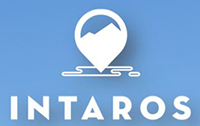The aim of D 6.3 is to use the existing environmental and fisheries reporting and management systems of the Barents Sea and off Greenland to demonstrate how data from an iAOS may allow for implementing similar procedures in other parts.
In Case Barents Sea, established and proposed indicators by the Barents Sea management plan, are selected for modelling and the results evaluated. Here we have used NORWEgian ECOsystem box Model (NORWECOM E2E) and NOrwegian and BArents Seas Atlantis ecological model (NoBa Atlantis), two complementary and very different end-to-end ecosystem models. They show how the indicators function according to evaluating state of and trends in ecological conditions, how to make such analyses cost-effective and what data are essential or not, including suggestion for indicators that may be added. The results from the models indicate that spatial and temporal scales for observations used in the calculation of the indicators are very important. Some areas are more important to sample than others, and the months in which they are sampled play an important role. To pick up on any changes in management, a suite of indicators should be used, as suggested in the Norwegian ecosystem-based management plans. Therefore, both simple and complex indicators are necessary to understand the whole picture. The next steps will be to investigate if there exists a smaller selection of indicators that provides a sufficient description of the system and any changes in it.
There are no ecological models for Greenland coastal waters in place, whereas there are some global or Atlantic Ocean models with coarser horizontal resolution applied to open waters provided by the Copernicus Marine Ecosystem Monitoring Service (CMEMS). An aim of the Case Off Greenland (Disko Bay) was to demonstrate downscaling from large-scale regional models to fine-scale local models of Arctic coastal waters. The applied model of Disko Bay is the first local-scale, ecological model for Greenland marine coastal waters using available iAOS forcing data. It was developed in the FlexSem model system, a versatile tool suitable to resolve coastal waters on an unstructured mesh (Larsen et al., 2020), The model resolves the Disko Bay with a high horizontal resolution (down to 1.8 km) in comparison to the regional models providing the open boundary data. The sea surface temperatures were improved in FlexSem by implementing a full surface radiation model forced with model data of wind speed, cloud cover, specific humidity and ice cover. Freshwater inputs were improved by including state-of-the-art data of meltwater run-off from the PROgramme for Monitoring the Greenland Ice Sheet (PROMICE). The model showed in general good agreement with vertical profiles of temperatures and salinity, except that bottom values were underestimated compared to CTD data. The biogeochemical model Ecological ReGional Ocean Model (ERGOM) was applied to the Disko Bay set-up with a few changes (picoalgae, Calanus finmarchicus, background light attenuation) applicable to Arctic waters. The first results showed overall good agreement with climatology data. In the next version, the model needs improvement on the microzooplankton parametrization, light attenuation from ice meltwater and C. finmarchicus behavior. We consider what kind of data be essential for holistic and integrated modelling of Arctic marine ecosystems, and iAOS will be an important source for such data. Further, the steps to take for applying model analyses for new regions are suggested. These suggestions are to be included in the INTAROS roadmap. This report is based on the preliminary results of task 6.2 “Improved ecosystem understanding and management”, in dialogue with Task 6.8. and the results and experiences will be used as platform for further work on the next Deliverable D 6.13, where dialogues with tasks 6.3 and 6.6 will also be established.
